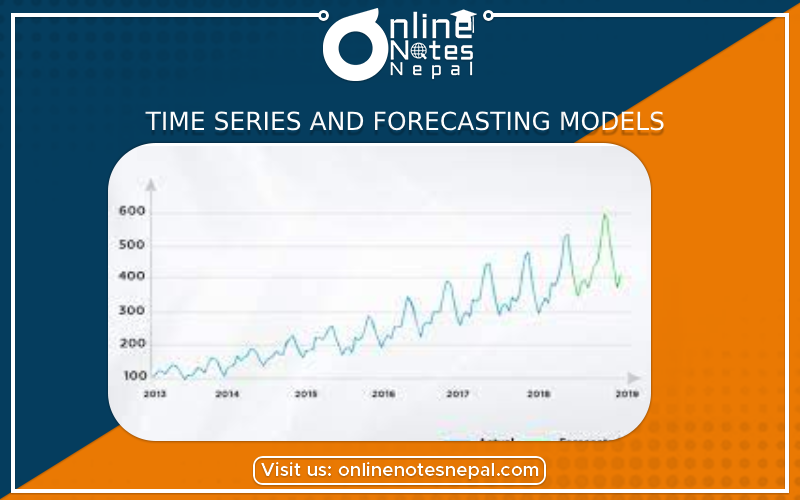Published by: Anu Poudeli
Published date: 04 Jul 2023

Tools for data analysis and forecasting that are crucial include time series and forecasting models. Based on past data points, they are used to assess and predict trends, patterns, and future values. A time series is a collection of observations made repeatedly over a period of time, where each data point has a unique timestamp. These historical data are used by forecasting models to provide predictions about future values. An overview of time series analysis and a few well-liked forecasting models is provided below:
Time Series Analysis:
The study of patterns, trends, and seasonality in a dataset is referred to as time series analysis. It aids in locating underlying patterns and connections in the data. Among the crucial elements of time series analysis are:
a. Trend :The trend, which can be upward, negative, or flat, is the long-term movement or direction of the data.
b. Seasonality: A time series' recurring pattern that is typically driven by predictable events or intervals.
c. Cyclical Patterns: These fluctuations take place over relatively extended stretches of time but are less predictable than seasonality.
d. Irregular/Random Fluctuations: Random and unpredictable changes in the data.
Forecasting Models
Predictions based on time series data are made using a variety of forecasting models. Among the well-liked ones are:
a.Moving Average (MA): The moving average model predicts future values by averaging the previous 'n' data points. It highlights long-term patterns while reducing short-term volatility.
b. Exponential Smoothing (ES): This technique generates a weighted average forecast by giving previous observations progressively decreasing weights. It is appropriate for data without a discernible trend or seasonality.
c. Autoregressive Integrated Moving Average (ARIMA): An effective time series forecasting model, ARIMA combines moving average, autoregression, and differencing elements. It works well for data that can be made stationary through differencing and has trends and seasonality.
d. Seasonal Decomposition of Time Series (STL) : SARIMA (Seasonal Autoregressive Integrated Moving-Average) is an extension of ARIMA that takes into account seasonal variations in the data.
e. Seasonal Decomposition of Time Series (STL): This technique divides a time series into trend, seasonality, and residual components. This division makes analysis and forecasting simpler.
f. Prophet: Prophet is an open-source forecasting tool created by Facebook that is intended to handle time series data with several components and severe seasonality.
LSTM Networks (Long Short-Term Memory): LSTMs, a subclass of recurrent neural networks (RNN), are efficient for studying and predicting data sequences, including time series.
h. HWES, or Holt-Winters Exponential Smoothing: This technique expands exponential smoothing to handle trending and seasonally relevant data.
Notably, the properties of the time series data, the existence of seasonality or trends, and the necessary prediction horizon all influence the choice of forecasting model.
All things considered, time series analysis and forecasting models are essential in a number of disciplines, including finance, economics, weather forecasting, inventory management, and more. On the basis of past trends and anticipated future values, these models assist businesses and organizations in making wise decisions.